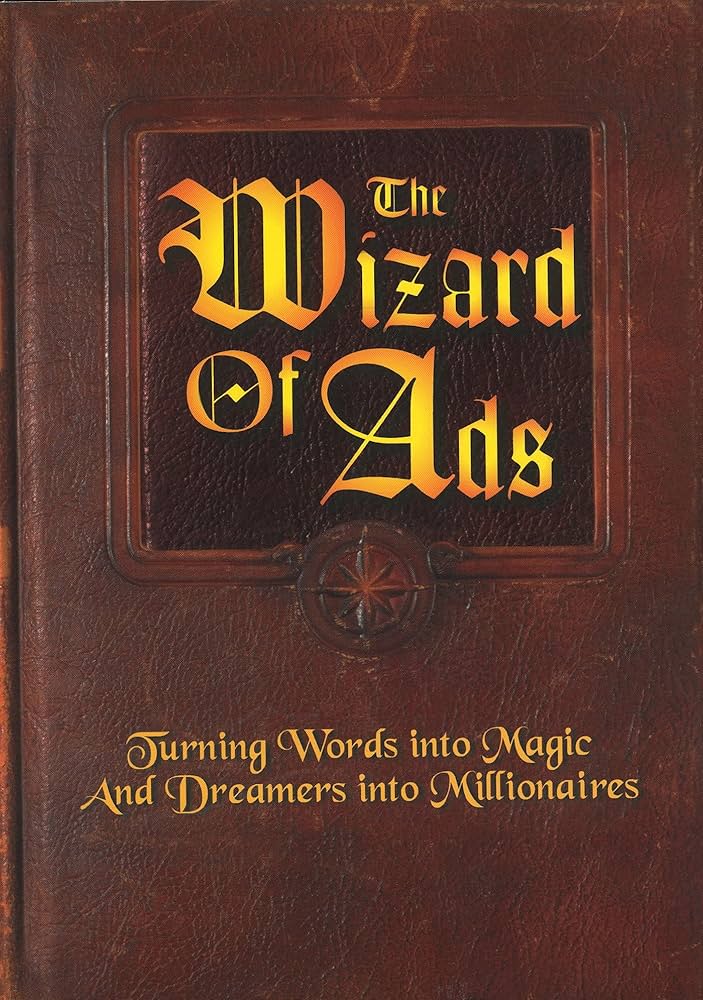When others outside our industry control the narrative, it’s easy to see why many listeners and advertisers overlook the power of radio and audio. If you’re a fan of “The Wizard of Ads” as I am, you already know that audio remains one of the most compelling forms of communication, especially when it comes to advertising.
Radio ads in particular harness the most unique “power of sound” that connects with people, evokes emotions, and leaves a lasting impression, which we all hope to deliver to all our clients and listeners.
I was lucky enough, many years ago, to attend a gathering of a large broadcasters’ general managers and programmers. There were scores of us in the hotel ballroom. Much to my surprise, the introduction was made and Roy H. Williams himself walked out on stage. For the next 45 minutes, I was mesmerized. He explained things I already “felt” were true, but he put it all into real science.
Williams is a best-selling author well known for his Wizard of Ads trilogy. He is also the founder of the Wizard Academy institute and lives in Austin with his wife. He is my age, but when he walked out on stage, he looked like the most learned professor I ever had in college. Williams produces and publishes a free, compelling weekly column and podcast titled the Monday Morning Memo.
Williams began by talking about the human brain and how it processes sound faster and more clearly than images. This gives audio an immediate and visceral impact. This quick processing speed allows humans to form emotional connections almost instantly.

When we hear a voice, a catchy jingle, or a familiar sound, it triggers emotional responses and memories, often without us even realizing it. This psychological phenomenon makes audio an incredibly effective tool for advertisers, as it can bypass rational thinking and appeal directly to a listener’s feelings.
Unlike visual media, where viewers might tune out or skip the ads, radio and other audio-based ads succeed and thrive because of their ability to captivate attention in real-time. When we listen to something, our brains engage in a deeper processing of sound. Creating vivid imagery and evoking emotions, even if we don’t consciously realize it.
This emotional engagement is crucial for creating ads that resonate with audiences, making radio ads highly successful. Try something at home.
Find the scariest movie you can imagine and then watch it without the sound on. What happens on the screen loses its power. Next, try listening to the sound without looking at the screen. The impact can still be felt.
Do yourself another favor and listen to your station’s commercials. If you’re a GM, GSM, or PD, listen to every new spot and see if it has what you believe is needed to move someone. Does it deserve to exist in its current form?
I know when I listen to the radio, I often hear spots that are all derivative, and I can literally tell who wrote them. All too often, they have the same basic content. Name of the company, what they do, their phone number (which I really dislike) and perhaps their website.
They lack any real creativity and uniqueness. The kicker to me is when they say, share the same tagline, “For all your roofing needs” or “for all your insurance needs”. You get the idea. They all say, “For all your [insert business category here]. It’s not the seller’s fault. They’re not copywriters, but we can help improve the process and results.
Besides the inherent power of audio, radio is often heard where people are actively engaged. Driving, working, or commuting. Meaning they are more likely to absorb the message. The more compelling, the more absorption.
When I was GM in a previous market, I was always dumbfounded how one of the major fast food burger chains didn’t advertise on radio and used TV. When I’m driving around at lunchtime, thinking of a place to eat, would it not make sense to target me in the car rather than in the evening? After I have had dinner, I won’t be going out again. I understand the purpose of branding using radio. But sometimes, you can make it all about transactional business, too, and that just seemed like a natural.
So, what do we need to focus on to create successful radio ads?
For me, the most important element is creative copy that elicits some emotional response. Ads that tap into emotions like humor, urgency, drama, and conflict. Humor and/or nostalgia are often the most compelling. It’s the “tale as old as time”! (I know you started singing “Beauty and the Beast” in your head.)
The goal is to make the listeners feel something. It could be joy, excitement, desire, FOMO, or anything that moves the heart that is most likely to be remembered and take action.
One of my favorite quotes from brand strategist Scott Talgo says, “A brand that captures your mind gains behavior; a brand that captures your heart gains commitment.”
Another strategist, Scott Bedbury, said, “A brand is a story never quite completed.” Simply put, we need to tell great stories using sound that compels the heart.
Let us all take control of the narrative again and stop letting others usurp our incredible position in the world of advertising.
Barrett Media produces daily content on the music, news, and sports media industries. To stay updated, sign up for our newsletters and get the latest information delivered straight to your inbox.

Bob Lawrence writes weekly columns on radio leadership and business. Additionally, he serves as Market Manager for MacDonald Broadcasting in Saginaw, Michigan. He has held virtually every position in the business over his 40+ year career, from being on-air in Philadelphia, San Diego, and San Francisco to programming legendary stations including KHTR St. Louis, KITS Hot Hits and KIOI (K101) San Francisco to serving as the head of all programming for Saga Communications and working for the Radio Advertising Bureau. Before landing his current role, Bob helped lead Seven Mountains Media’s cluster in Parkersburg, WV/Marietta, OH. He can be reached by email at BGLawrence@me.com.
Bob also honed his research skills over ten years as Senior VP of Operations at Broadcast Architecture, eventually launching his own research company and serving as President/CEO of Pinnacle Media Worldwide for 15 years. Bob spent five years as VP of Programming for Saga Communications before joining New South Radio in Jackson, Mississippi as GM/Market Manager. Prior to joining Seven Mountains Media, Bob served as General Manager for the Radio Advertising Bureau, overseeing its “National Radio Talent System”.




